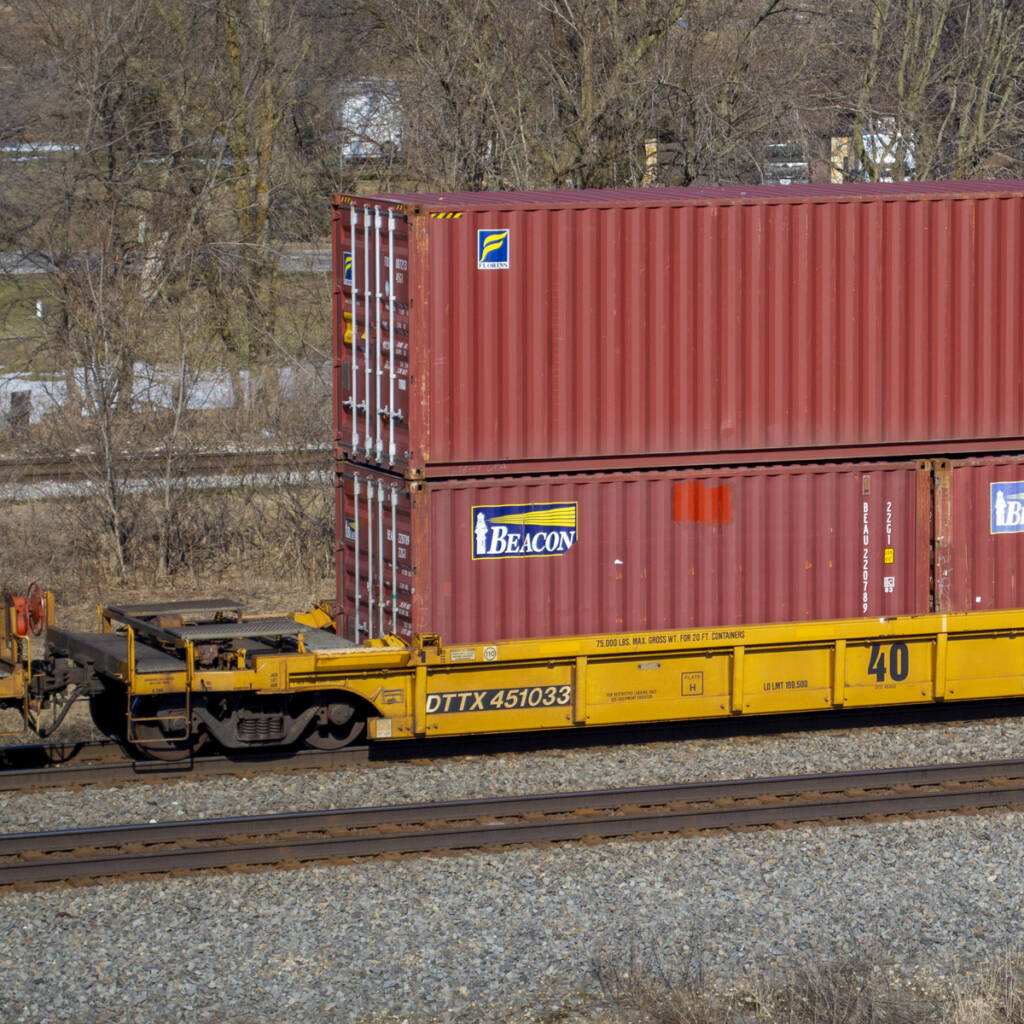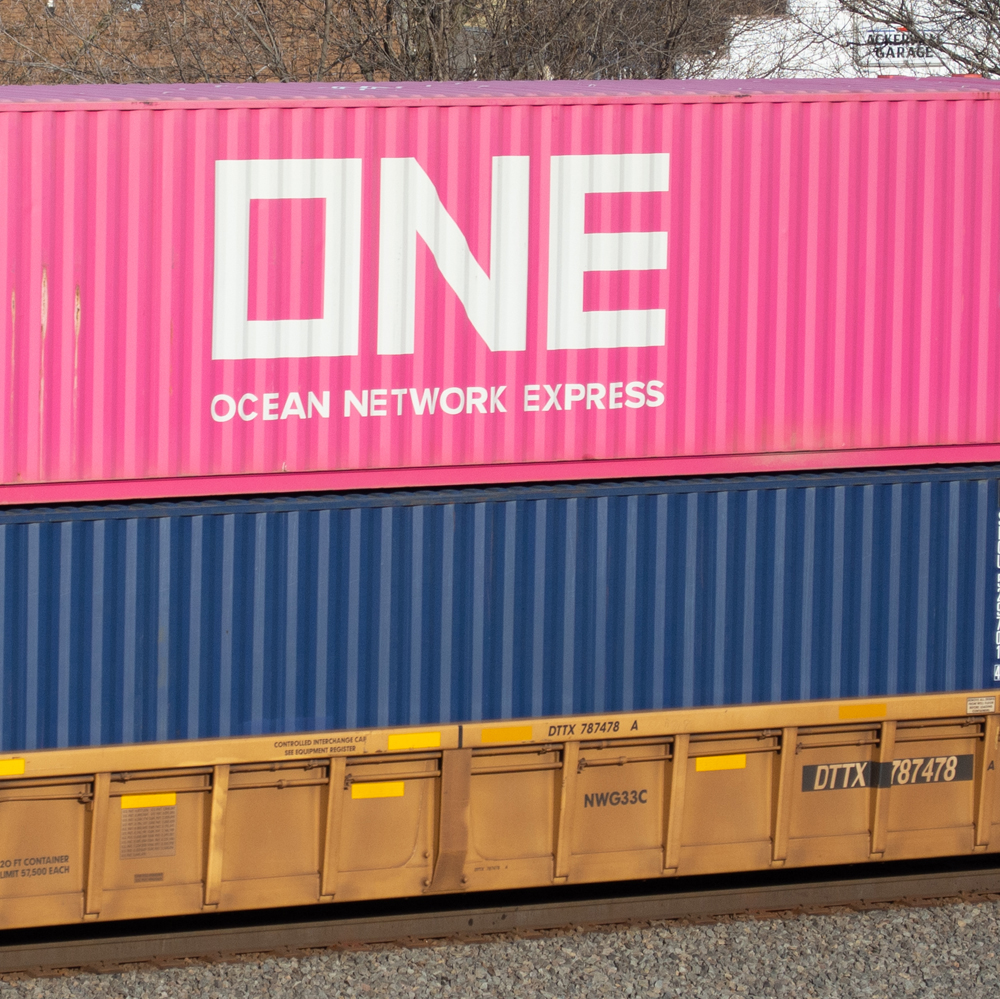
Q: I’m curious why I’ve never seen four 20-foot intermodal containers in a single well car, stacked two on top and two on the bottom. I’ve only ever seen two 20-foot containers in the well and a 40-foot (or larger) container on top. — Benjamin Stewart
A: David Lassen, senior editor at Trains magazine, put me in touch with Jason Hilsenbeck, founder of the websites Loadmatch.com and Drayage.com. Here’s what he had to say on the topic: “I don’t know if there is a specific Association of American Railroads rule on stacking a 20-foot container on top of another 20-foot container in a well car. My understanding is railroads don’t place them on top of each other due to securement issues. Well cars sway back and forth when rolling down the track, twisting front to rear. With only 20 feet of length — half the length of a 40-foot well car — it’s preferred to keep to the 20-foot containers on the bottom.
“Besides, there are always way more 40-foot containers to load compared to 20 footers. Of the 60-plus million ocean containers, approximately two-thirds are 40-feet; a third are 20 feet. There will always be 40-foot containers to load on the train.
“If you have four 20-foot containers, they will be on the bottom and a 40-foot container placed on top. Not every container you see has a load inside it — some containers are empty repositions. Hopefully the intermodal terminal placed the heaviest containers on the bottom.”
Send us your questions
Have a question about model trains, full-size trains, or toy trains? Send it to AskTrains@Trains.com.















